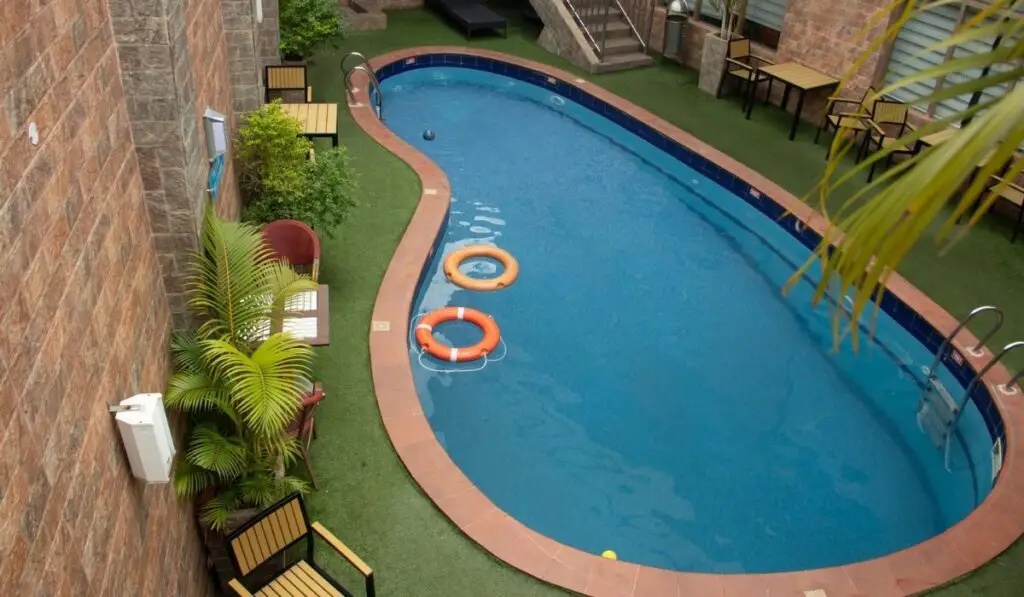If you often have pool water lapping over the edges of your pool and into your plants, you might be wondering if it can do any damage. Perhaps you water your plants and have a pool conveniently close by, and are even wondering if you could use that water to keep your plants healthy and full of life.
Pool water can kill your plants if there’s an excess of chlorine coming into contact with them a lot over time. But, if it’s just some splashes every now and again, there should be no noticeable damage. Don’t use treated pool water to water plants regularly.
Now that you know it’s very possible for pool water to kill plants (in excess), let’s take a closer look at when it can damage them — and how to prevent and potentially reverse that damage.
Will Pool Water Kill Plants?

If your kids are splashing around in the pool and sprays of water are hitting the plants in your yard, then you don’t need to worry. It takes quite a bit of chlorine to kill them off and this shouldn’t be enough to do any damage. You can rest easy!
However, there are times when chlorine may damage your plants. This usually involves times when there’s a lot of water coming out of the pool, such as a storm raising the levels and causing it to spill over or draining your pool into the yard (which you should usually never do, as draining it into the sewer line is better.
Some plants are more sensitive to pool water, including:
- Fruit trees
- Willow
- Jasmine
- Roses
If you have any of these plants, it’s a good idea to keep them far away from your pool just to be on the safe side.
Can You Water Plants With Pool Water?
Although there are certain plants that are surprisingly tolerant of pool water (such as hawthorn, rosemary, and honeysuckle), it doesn’t mean you should specifically use chlorinated water to keep them healthy. Don’t use pool water on your plants. Any other kind of water is better, including tap water, distilled water, and rainwater.
If you’re still determined to use pool water on your plants since there’s an abundance of it, the only way to safely do so is to use a reverse osmosis water filtration system (on Amazon) to remove any trace of the chlorine chemical. Past that, you can simply wait – fill up your water pail from the pool and let it sit for a week, so the chemicals can dissipate.
Remember, don’t use water from a saltwater pool either — it still produces chlorine, just through a more natural process, and isn’t great for your plants either.
Signs of Chlorine Toxicity in Plants

There are many different signs of chlorine toxicity you should keep an eye out for in your plants, including:
- Scorched leaves
- Plants yellowing and drooping
- Other obvious signs your plant may be dying
If anything looks off after there’s been a lot of pool water touching them, chances are, it’s because of chlorine toxicity. That means it’s time to try and reverse the damage.
If your plants are potted, move them far away from the pool to ensure no more pool water touches them. Here on, you should make sure you water them with water that has absolutely no chlorine in it, ensuring you don’t make the damage worse.
If there’s only a touch of toxicity, you may be able to nurse the plants back to health.
In the future, try and keep pool water from getting on your plants. If your plants are suffering from chlorine toxicity, it seems that they’ve had a huge amount.
Keep an eye on the water level in your pool and if you ever need to drain it, make sure you buy the correct equipment and go through the sewer line rather than attempting to drain it all into your yard. That’s how you get a dead lawn.
